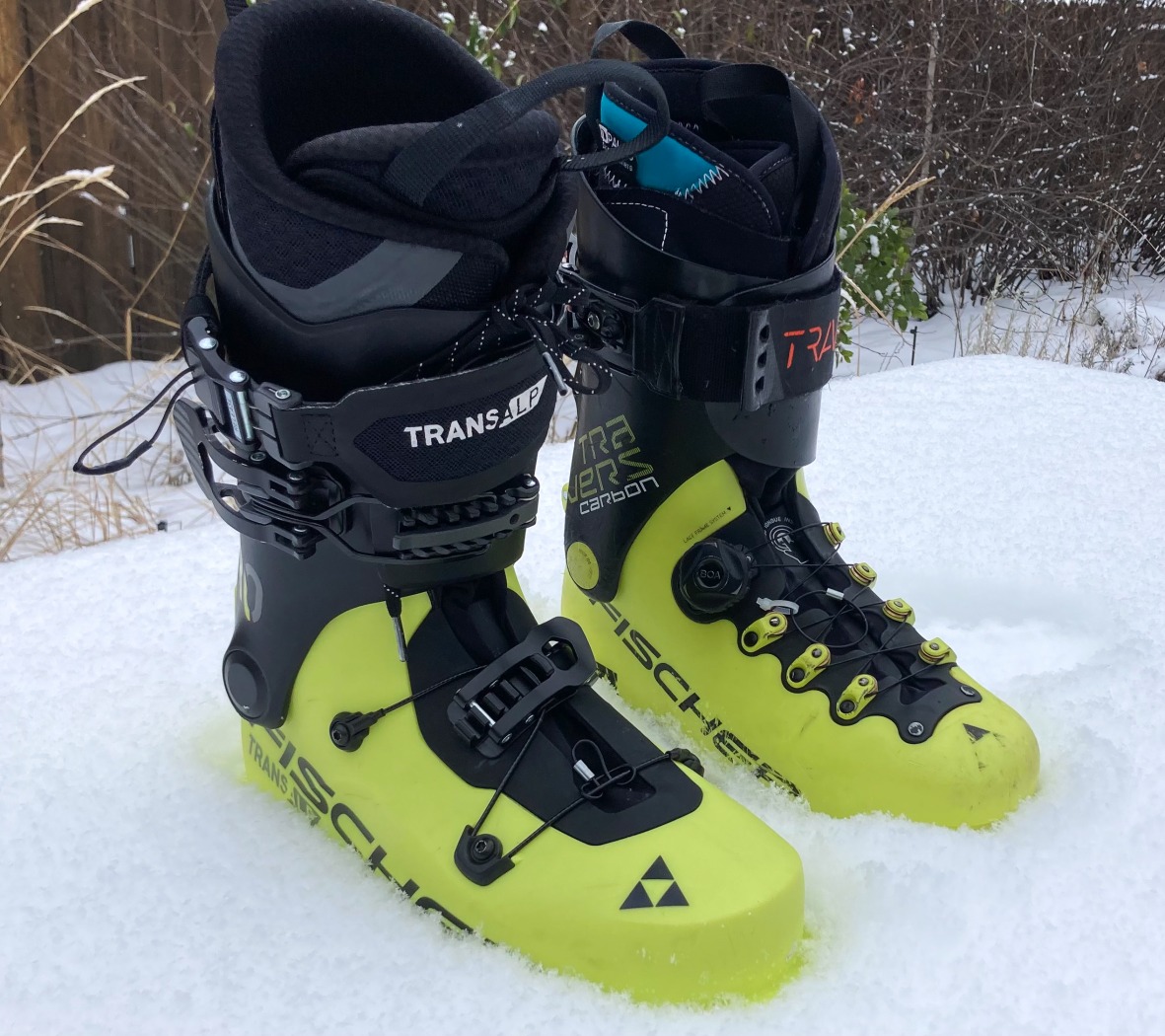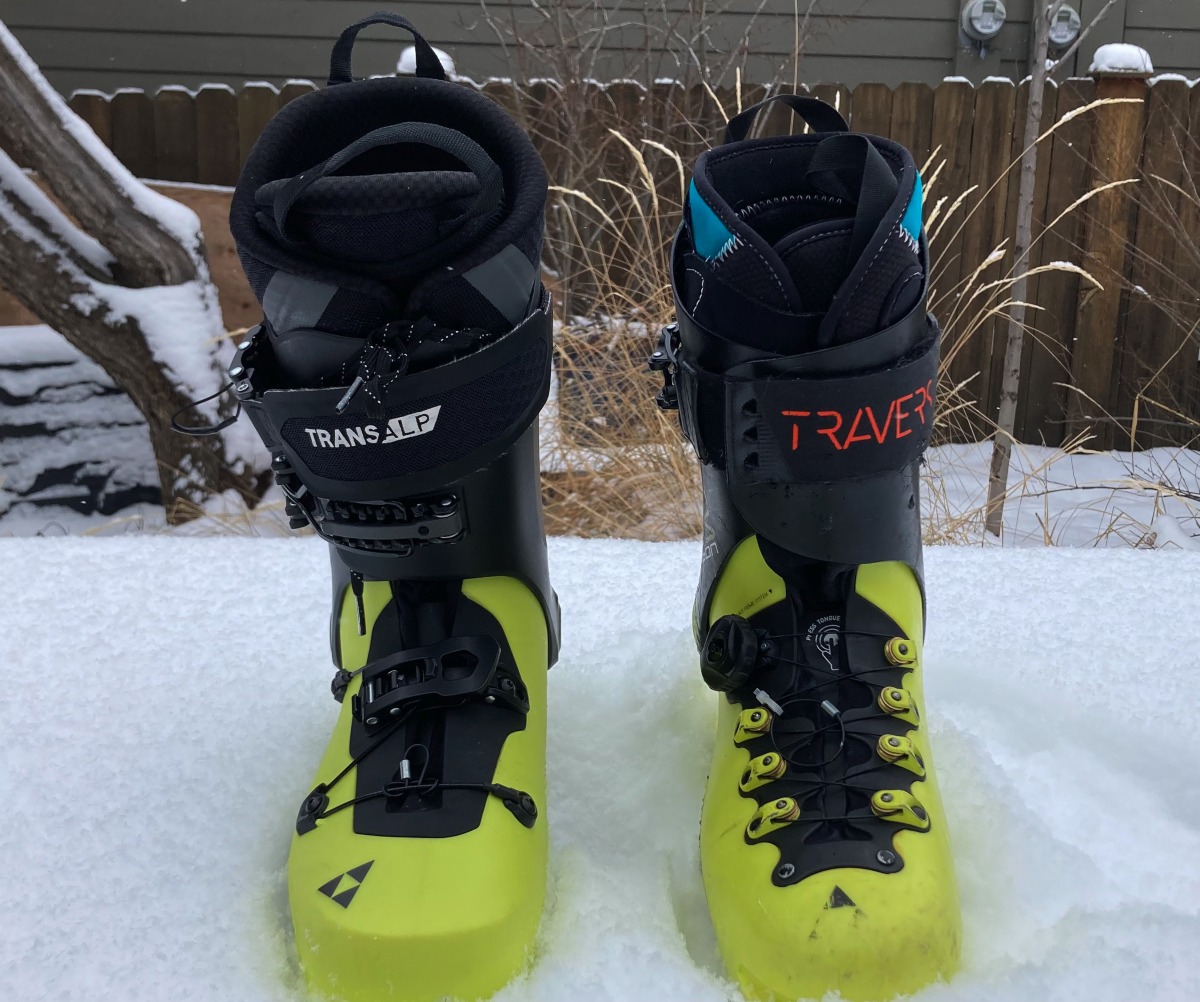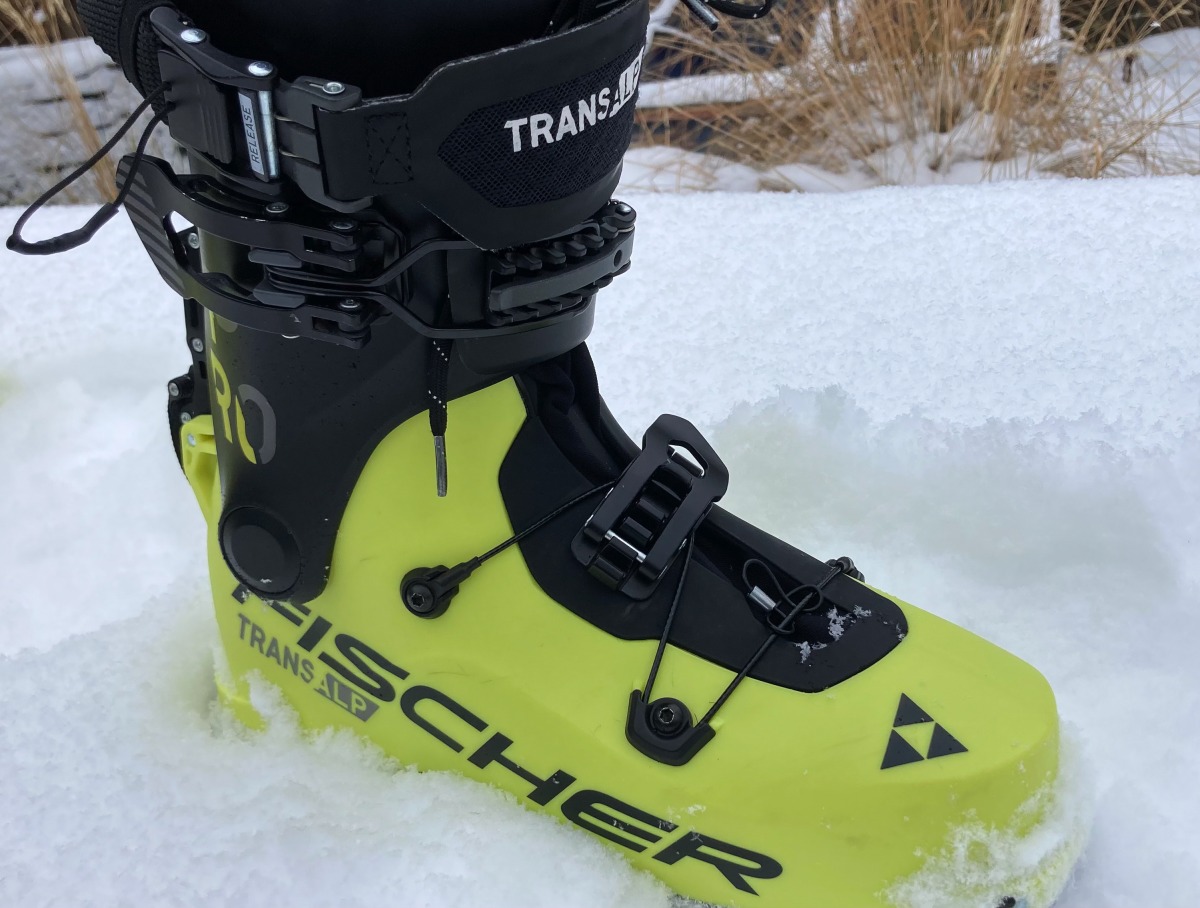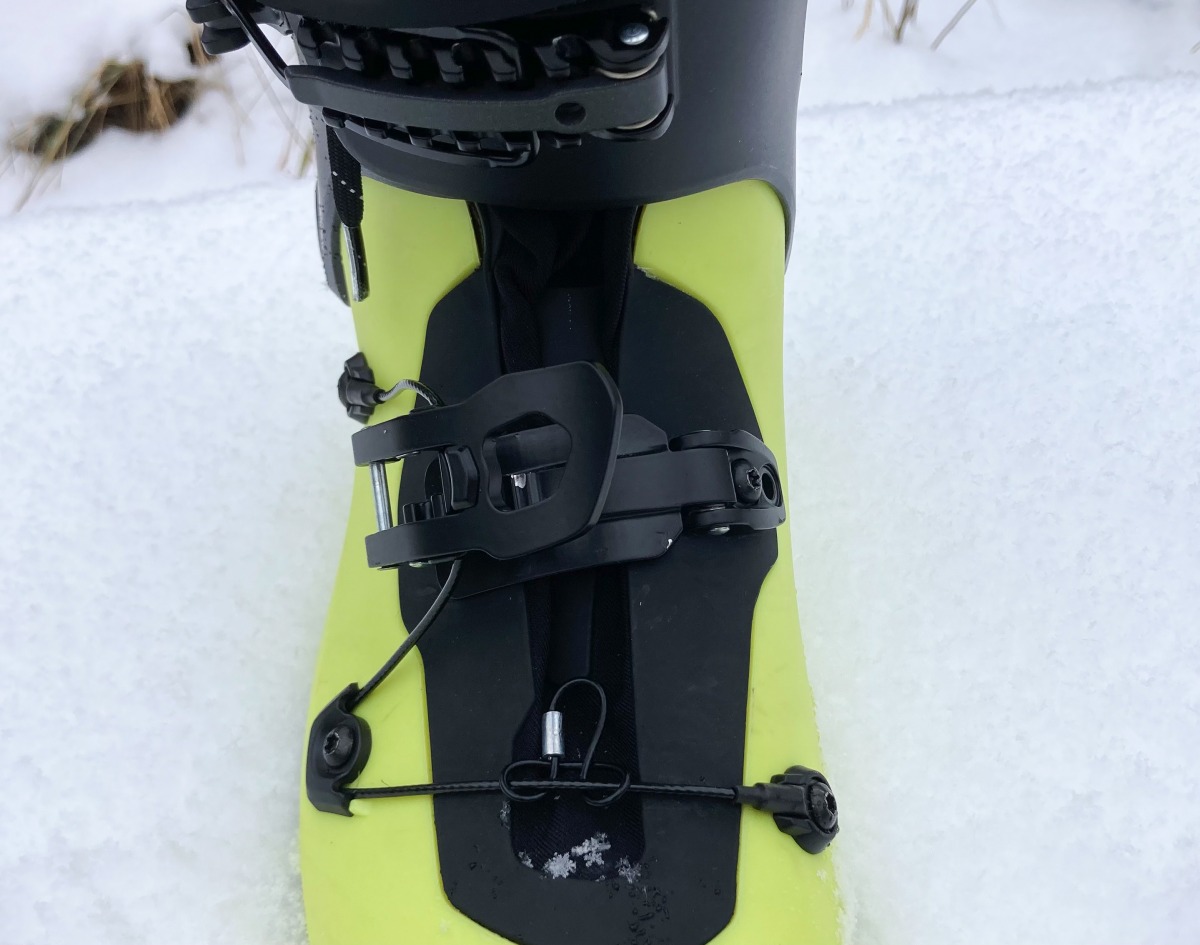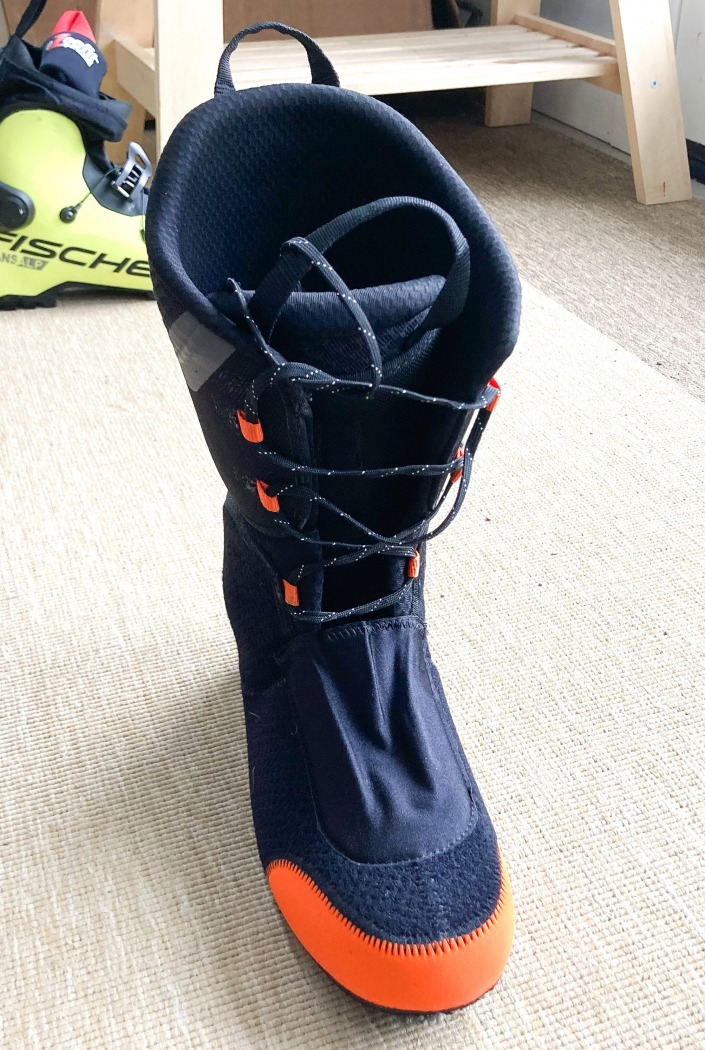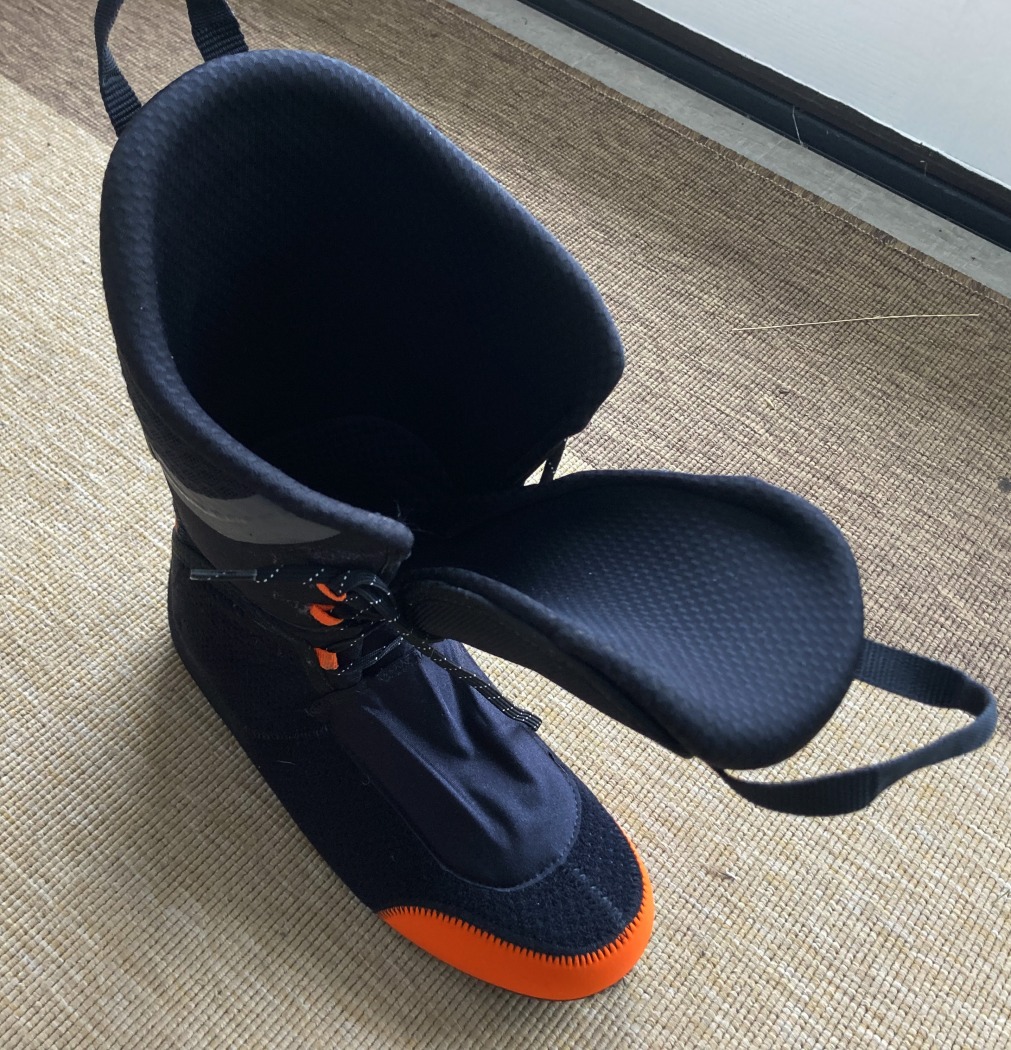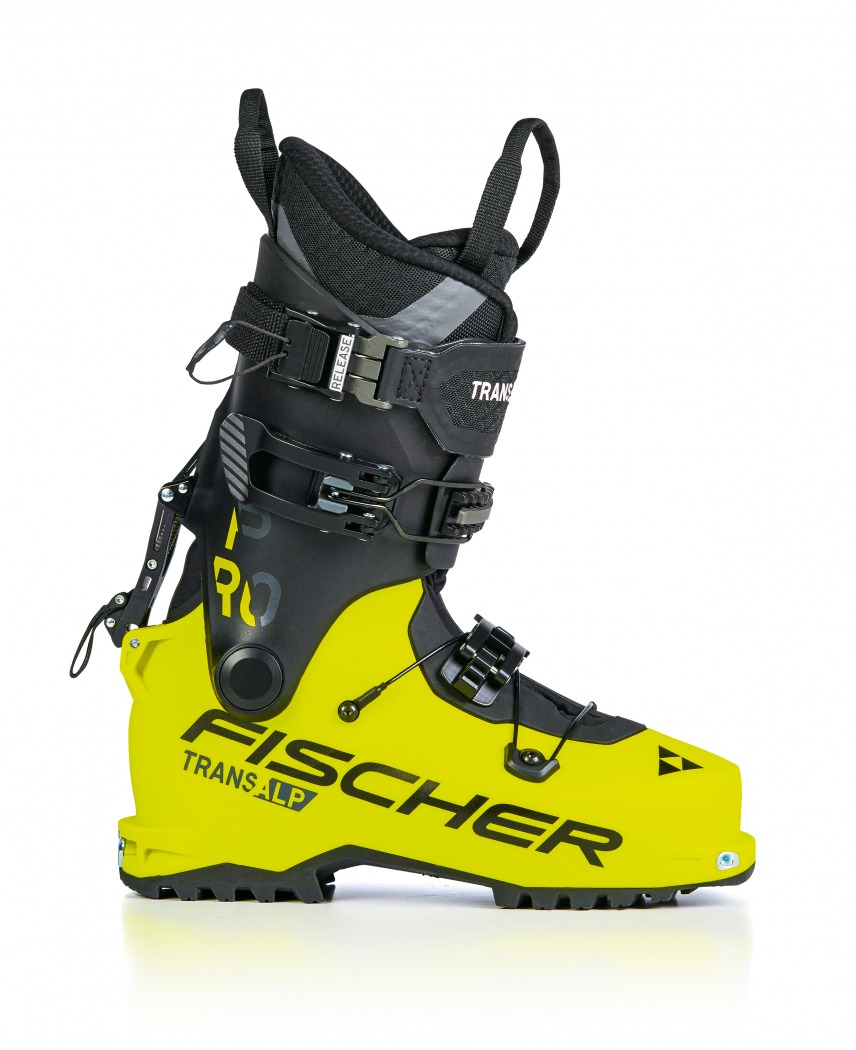
Fischer’s adds the Transalp Pro to the more downhill segment of the touring market. If the Transalp Pro fits, you may just find yourself in a long-term relationship.
So many variables to consider when thinking of a human foot: Flat feet, stone bruises, Morton’s neuroma, low arches, high arches, bunions, high or low instep. There are also twenty-six bones and thirty joints comprising a human foot. In the backcountry skiing world, where boot comfort, power transfer, and touring prowess reign supreme, considering those bones and joints and ailments, so much can go awry. We’re lucky, though; we are in a time of plenty for backcountry touring boot options.
My boot choices over the last 12 years or so have looked like this: A size 26.5 Black Diamond Quadrant (the lime green and citron version), a drastic pivot to the same size Dynafit PDG (with minimalist skis), then a tortuous TLT6. I then found boot-fit Nirvana out of the box – hello 27.5 Fischer Travers Carbon. The boots fit like a custom slipper.
I never heat-molded the original Travers liners. I employed the included spoiler and 1mm thick volume reducer under the footbed and eventually came around to use blue-colored Superfeet insoles. Last season, I replaced the stock liners with Palau Tour Lite Pro Evo liners, which have been middle of the road – no real love affair, but no deep disdain. But over four full seasons, the shells have softened slightly. These are not burly boots; they weigh 1140kg with the Tour Lite liners. Last winter, I skied Movement Alp Track 100s or scurried along on deep spring tours skiing Hagan Ultra 82s, all in the same boot. I could not give up the sweet fit, the relatively lightweight, and A+ mobility.
These boots, however, are close to the end of their lifespan. Rather than beat the boots into oblivion, I’m temporarily resting my Travers, except for short tours and uphilling, so they’re in one piece when shocked from hibernation come spring.
Enter The Transalp Pro
Last February, WildSnow published “Light(ish) & Robust — 2021/22 Fischer Transalp First Look,” which I read and re-read. The words “modeled the Transalp after the Travers” set the hook. I had a hunch how I would fill my deep-winter ski boot void.
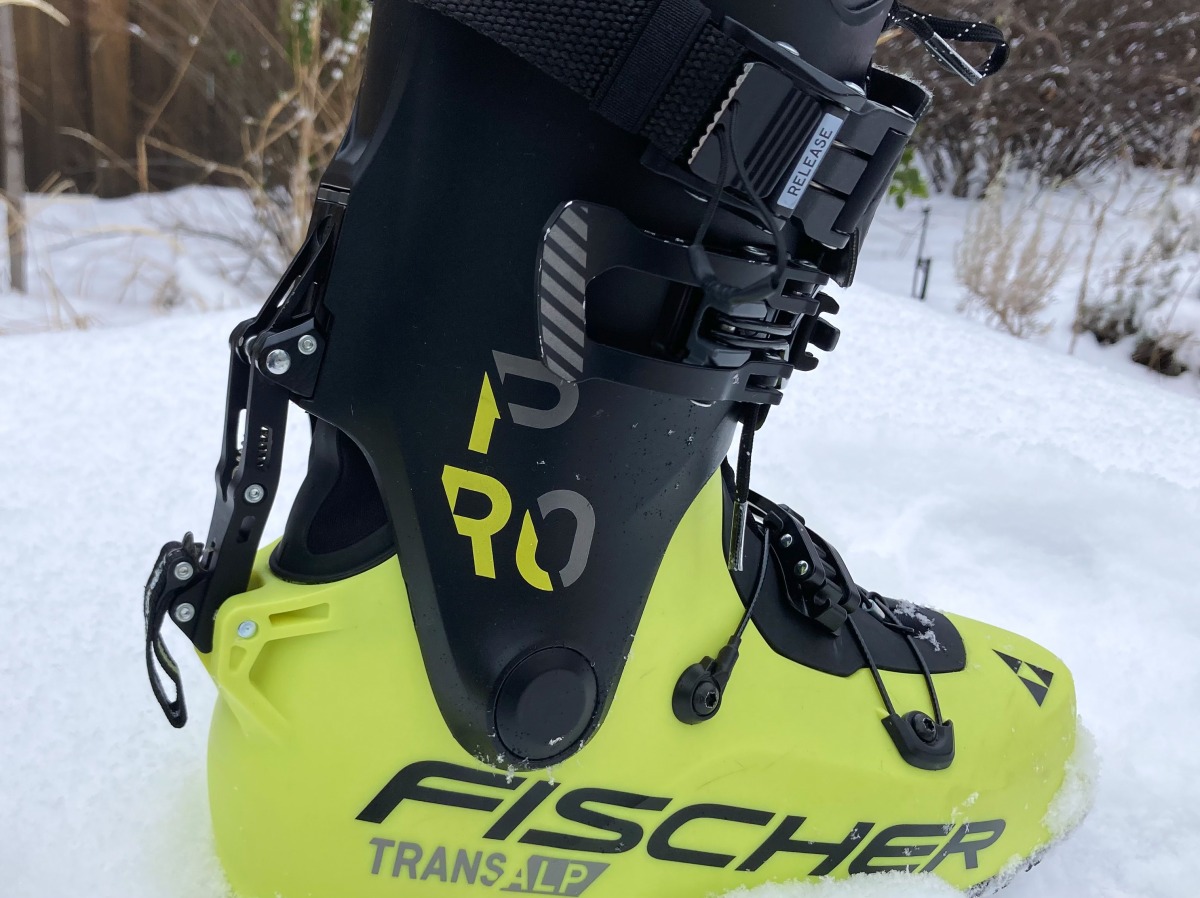
A side view of the Transalp Pro with the upper power strap, two buckles, and rear lockout ready to provide a relatively stiff boot experience.
I’ve seen the Transalp Pro rated as a 130 flex and also a 120 flex boot. No matter how the numbers play out, the boots ski stiff for me, but more likely in the 120 flex range. However, the Transalp Pro is markedly stiffer than the Travers Carbon, which aligns with what I’m seeking: a beefier boot to drive bigger/wider skis combined with some tourability chops.
Over time, my foot has flattened slightly. My once 26.5 foot is now a solid 27.5. I was told the Transalp Pro boot runs a smidge small, so I should size up. I initially received a 28.5 (the boot comes in half-sizes from 22.5-30.5). I was swimming; heel lift, too much toe room, and my instep floundering around. Even the toe box seemed too broad; the 28.5 Transalp Pro’s last width is 104mm, whereas the 27.5 last slims down to 102mm.
Then, the slipper sprite summoned the goods with a 27.5 shell and liner. Again, like the Travers, a solid fit right out of the box. For context, while skiing, I wear Patagonia’s Lightweight Merino Performance Knee sock; it’s neither a thin compression sock nor a bulky heavyweight contender.
I have the Transalp Pro’s forward lean set at the stock 16 degrees (the boot’s lean can be modified, with an easy adjustment, to 13 degrees). Initially, I did not use the included spoiler. The spoiler is now velcroed in place; it takes up unneeded volume in the cuff due to my skinnier calves, allowing the power strap system to tighten more snugly.
The lower of the two buckles is a Z-buckle. The design allows the buckle’s tooth catch to be moved about .4mm closer to the top of the instep. I moved it – it takes about 30 seconds with a Torx driver – making for a tighter fit on my foot when closing the Z-buckle. The 1mm volume reducer is resting under the stock footbed. I’ve also recently inserted the blue Superfeet but have no ski days with that footbed.
Sticking with the boot’s lower, the plastic is stiffer and more rigid than the Travers’ lower. The Transalp Pro‘s lower is bisected by a “U-shaped cut out” like the Travers. The “cut out” is weatherproofed. And similar to the Travers, an inner gaiter extending about three inches up from the ankle protects the lower boot from the elements.
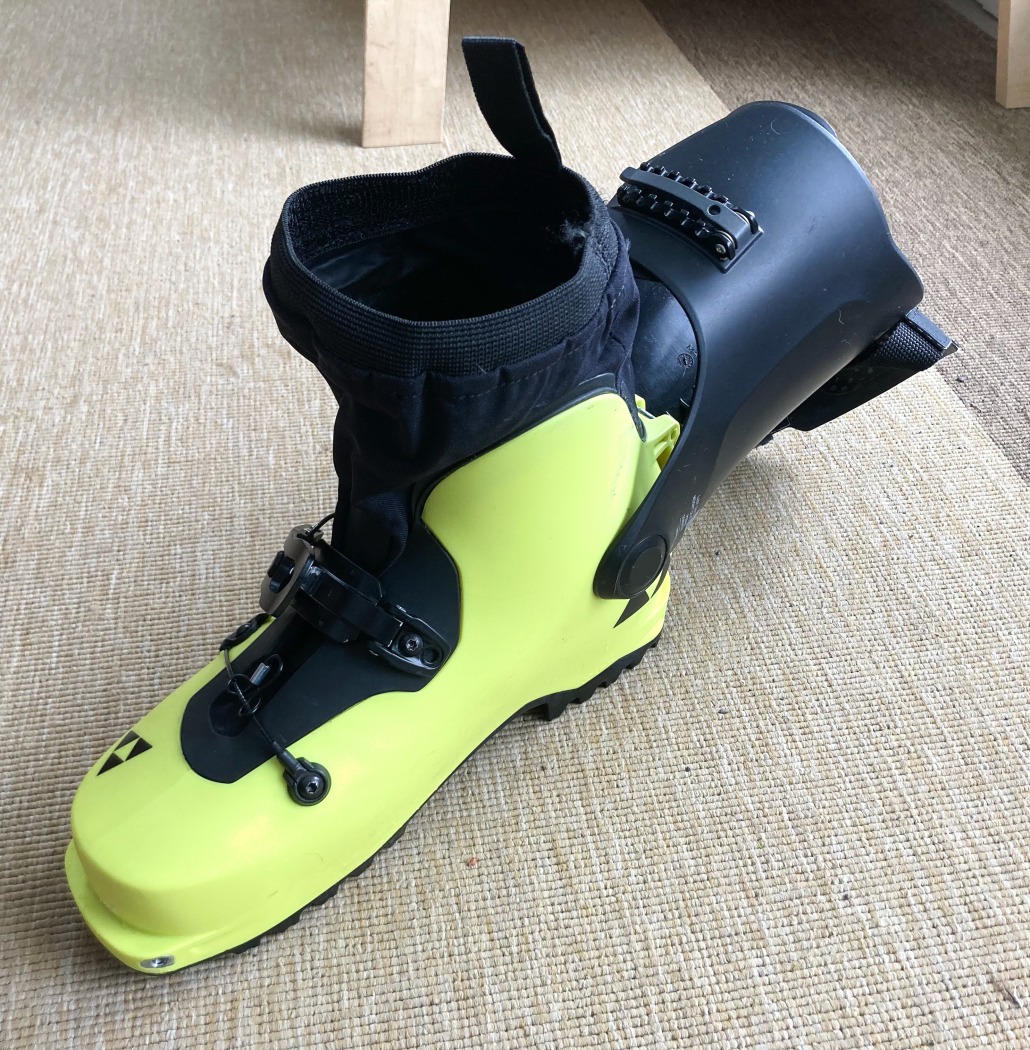
With the cuff pulled back and the liner removed, the inner garter is easily seen. After several years with the Travers Carbon, which uses a similar gaiter for weatherproofing, the system has worked well for me.
The cuff adds more beef to the Transalp Pro. There’s the already mentioned 55mm wide power strap, which includes a quick release to expedite transitions, to assist with power transfer. The power strap is riveted on, so removal might be a pain. However, from my experience, the power strap sits in a fixed position and does not ride up. Further, the upper’s plastic is undoubtedly stiffer than the more big-mission-oriented Travers.
The liner is robust too. Fischer claims the liner is more along the lines of an alpine-boot liner. I agree 100%; it trends heavily in that direction. The liner, according to Fischer, is velcro-friendly, making for easier fit mods. The tongue is also noticeably thick, in a good way, but before I descend, I still find myself readjusting the tongue to settle it in the sweet spot.
The swap from walk to ski mode is simple. A spring-loaded double lock throw flips into position quickly.
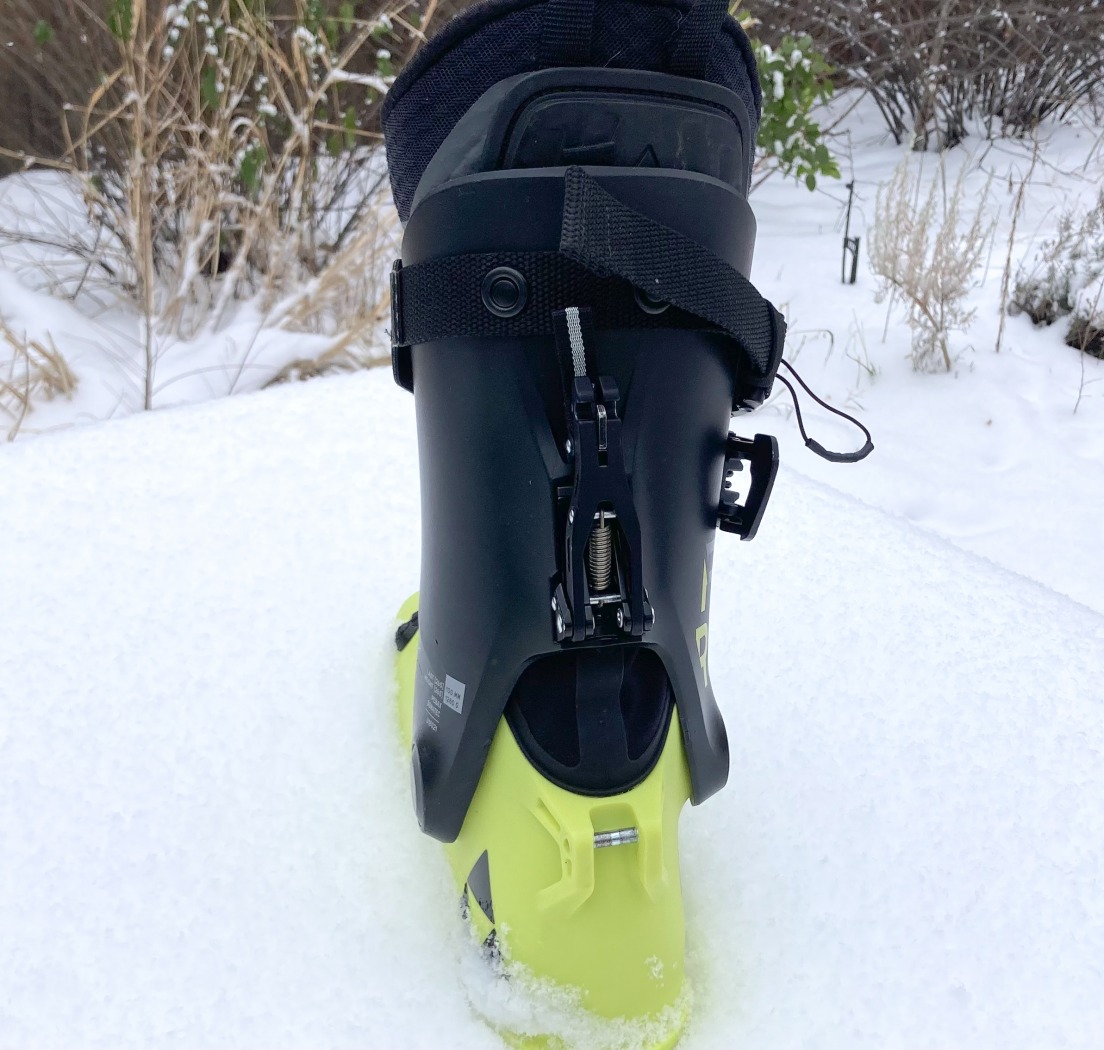
Seen from the rear, the spring loaded lock out mechanism is functional, reliable, and simple to use.
While descending, I have the Z-Buckle locked down as tight as can be adjusted, with zero instep pain – the pressure distributes evenly. With the buckles, power strap, and walk mode throw secured, my foot feels locked in place. All in all, understandably, the boot feels much more substantial than the Travers. And, it skis way stiffer, too, maintaining a progressive flex with no hint of shin bang.
Here in Bend, ample amounts of light snow have fallen. (So much for the Cascade cement.) My Alp Tracks, a ski made for soft snow, are now more lively and responsive – they are a better ski with the Transalp Pro driving them.
Altogether, I have found a charmer of a boot for the descents. My feet are snug and comfortable, and I’m reminded that stiffer and more robust boots mean better power transfer and control for skis pushing into the 1300g+ range and 95mm+ underfoot.
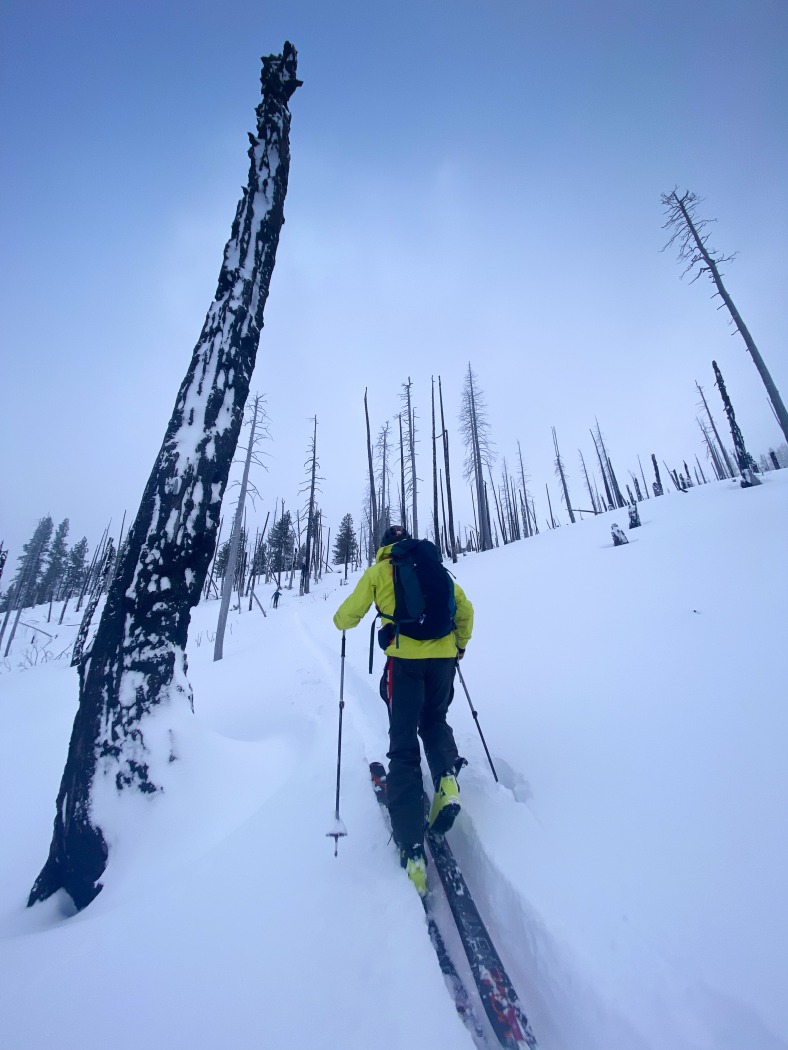
Skinning in the Transalp Pro is relatively carefree. The range of motion is somewhere in the mid-60 degree range with a relatively resistance free motion. Photo: Barry Wicks.
The Uphills
Any reader familiar with the Travers Carbon, or the latest edition of the boot, the Travers CS, knows these boots thrive while ascending. They sport a full 80-degree cuff rotation.
Although the Transalp Pro is aspirational, the cuff rotation, understandably with a stiffer boot, is reduced. The Fischer promo video on their site claims 80-degrees for a range of motion, while some other websites restate the 80-degree ROM claim. Cripple Creek BC states 65 degrees – and I’d agree with that.
The bindings used with this boot, so far, are the Black Diamond Helio 200s. They come with a flat mode and two riser options. I often stick with the lower “race height” lift, and the Transalp Pro‘s ROM seems right at home. There’s enough articulation with the cuff rotation that I’m not feeling the need for the higher riser. In flat mode, which I’m a fan of, the boot can stride along nicely. The Transalp Pro is no skimo boot, so don’t expect almost cross-country ski boot finesse, but if you have a five-mile semi-flat approach, the Transalp Pros can step up to the plate. Walking in the Transalp Pro is suitable. My experience walking in these boots, however, has been limited to trailheads and living rooms: for the time being, I’m not scrambling around on rock or cramponing on firm slopes.
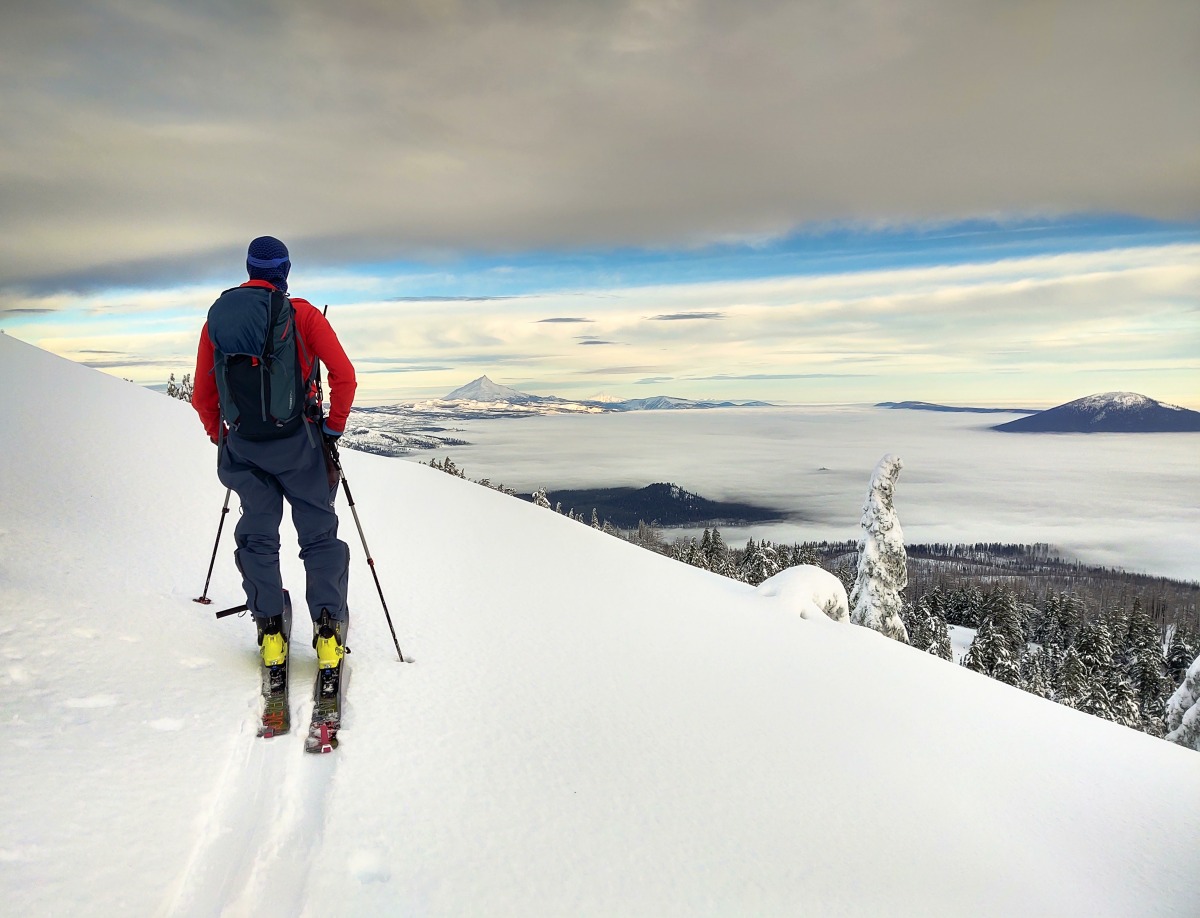
The Transalp Pro seems to be a solid choice for skiers looking for that in-control boot for the descents without paying too heavy of a weight-tax on the ups. Photo: John Sterling.
As I’m relatively new to this boot, I’m still working out my optimal adjustment set for skinning. While ascending, I loosen the power strap slightly, unclamp the upper buckle, lock it out of the way, and loosen the bottom z-buckle a bit (I have it snugged pretty tight while descending). Any resistance I feel skinning seems to originate from the substantial tongue. Otherwise, the walk/skinning mode is smooth and favorable. I knew going into this relationship the Transalp Pro‘s range of motion would be less than the Travers – but then again, the skiability is better. Always some give and take.
What about the weight? The Transalp Pros, with the spoiler, 1mm footbed volume reducer, stock footbed, and laces, are 1475g verified. That’s 335g heavier than my Travers set up.
I’ve found one non-deal-breaker downside to the Transalp Pro: the boots are noticeably more challenging to enter and exit than my Travers. My go-to ski partner used to wear Arcteryx’s Procline boot, which he liked. I loved him wearing them too – they took about five minutes per boot to get on and adjust at the trailhead. That afforded me ample time to fiddle with my pack, sip coffee, or stare up at the star-filled cosmos. I’m not exactly in that slow-go territory of boot preparedness with the Transalp Pro, but I’m trending in the slower-to-get-ready part of the spectrum now. I must pull the cuff back as far as possible to accomplish the enter-exit tasks, and still, I need to ensure to loosen up the liner fully. Otherwise, I’m like that small kid trying to jam their foot into a rigid plastic alpine boot stressing bones in a semi-painful way.
The fact is this: I’ve been looking for a stiffer boot. Until now, I’ve been unwilling to pass on the Travers Carbon’s upsides for my mid-winter backcountry skiing. That game is mostly over.
The extra 335g with the Transalp Pro is something I can overlook; the honeymoon phase with these boots suggests long-term prospects. A month into our late-start ski season, the fit remains Cinderella-slipper supreme. It has been boot-bliss and still no heat mold. It’s hard to ignore happy skinning, happy feet, and happy turns.
The Transalp Pro retails for $899.99, Although this review is for the Transalp Pro, Fischer offers several similar models in the Transalp range. There’s the Transalp Tour ($799.99), Transalp Tour WS ($799.99), and the Transalp TS ($699.99).
Shop for the Fischer Transalp Pro.
SPECS
Weight: Transalp Pro 27.5 1475g with spoiler and 1mm volume reducer.
Range of Motion Closer to the mid-60 degree range.
Sizes available: Transalp Pro 22.5 – 30.5.
Flex: approximately 120.
Last: 102mm for size 27.5 (The 26.5 last is 100mm, whereas the 28.5 last is 104mm. The Fischer website will specify last size when you input boot size details.)
Material: Pro — Pebax Rnew shell and cuff.
Forward Lean: 16 degrees or 13 degrees (without spoiler).
Sole: Full rubber w. standard Dynafit tech inserts.
Binding compatibility: Fischer says the boot meets the ISO 9523 touring norm, making it compatible with “all low tech, AT, and frame bindings.”
Crampon compatibility: Automatic.
Price: $899.99
Jason Albert comes to WildSnow from Bend, Oregon. After growing up on the East Coast, he migrated from Montana to Colorado and settled in Oregon. Simple pleasures are quiet and long days touring. His gray hair might stem from his first Grand Traverse in 2000 when rented leather boots and 210cm skis were not the speed weapons he had hoped for. Jason survived the transition from free-heel kool-aid drinker to faster and lighter (think AT), and safer, are better.

